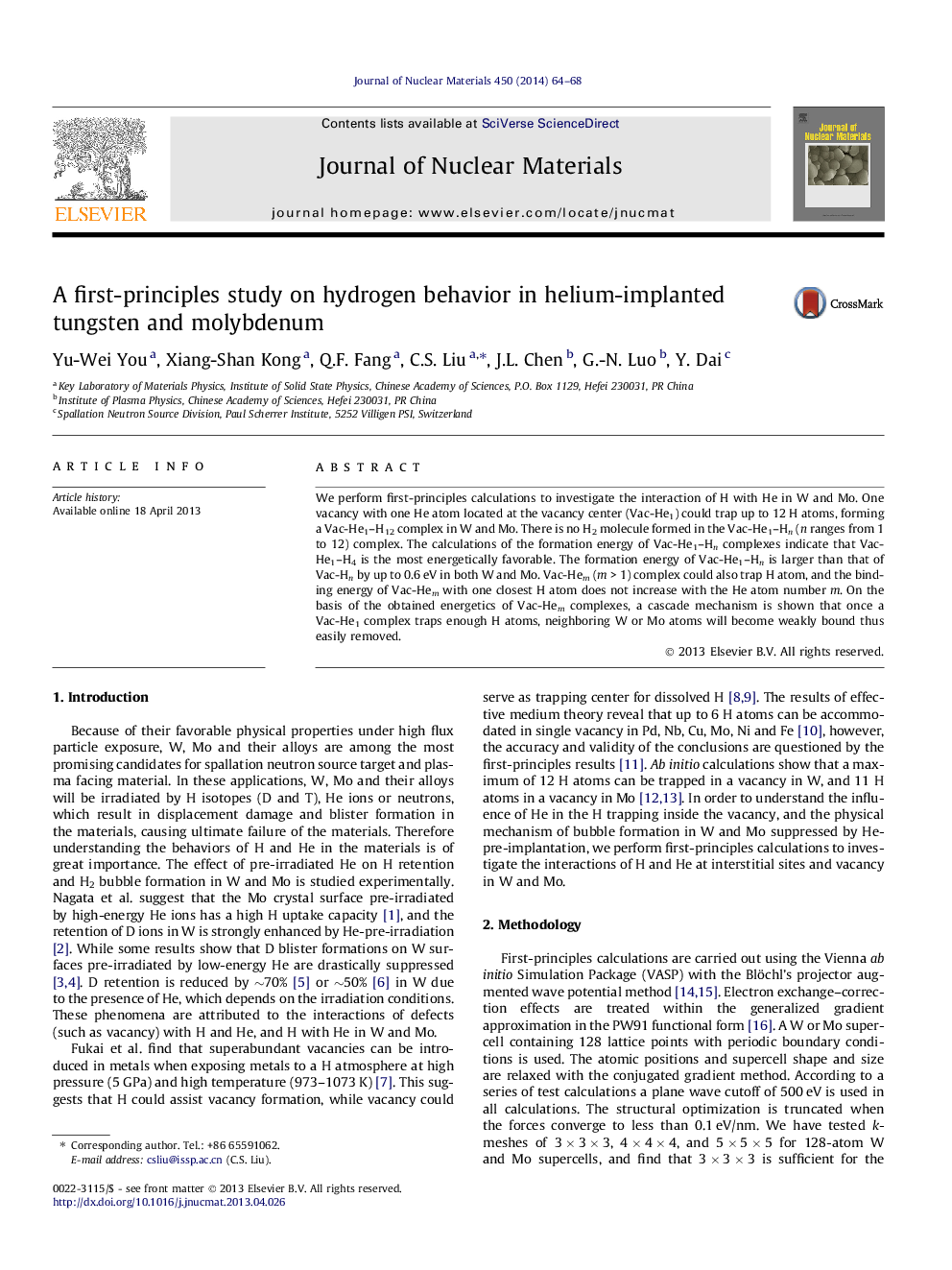| Article ID | Journal | Published Year | Pages | File Type |
|---|---|---|---|---|
| 1565175 | Journal of Nuclear Materials | 2014 | 5 Pages |
We perform first-principles calculations to investigate the interaction of H with He in W and Mo. One vacancy with one He atom located at the vacancy center (Vac-He1) could trap up to 12 H atoms, forming a Vac-He1–H12 complex in W and Mo. There is no H2 molecule formed in the Vac-He1–Hn (n ranges from 1 to 12) complex. The calculations of the formation energy of Vac-He1–Hn complexes indicate that Vac-He1–H4 is the most energetically favorable. The formation energy of Vac-He1–Hn is larger than that of Vac-Hn by up to 0.6 eV in both W and Mo. Vac-Hem (m > 1) complex could also trap H atom, and the binding energy of Vac-Hem with one closest H atom does not increase with the He atom number m. On the basis of the obtained energetics of Vac-Hem complexes, a cascade mechanism is shown that once a Vac-He1 complex traps enough H atoms, neighboring W or Mo atoms will become weakly bound thus easily removed.
